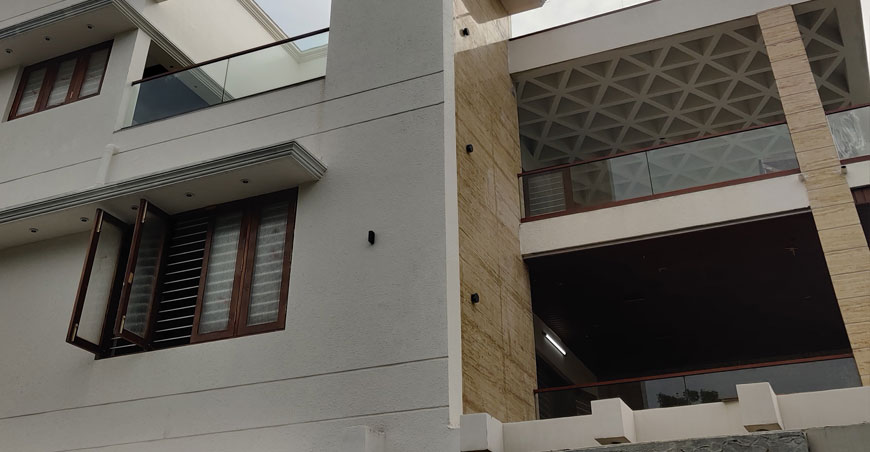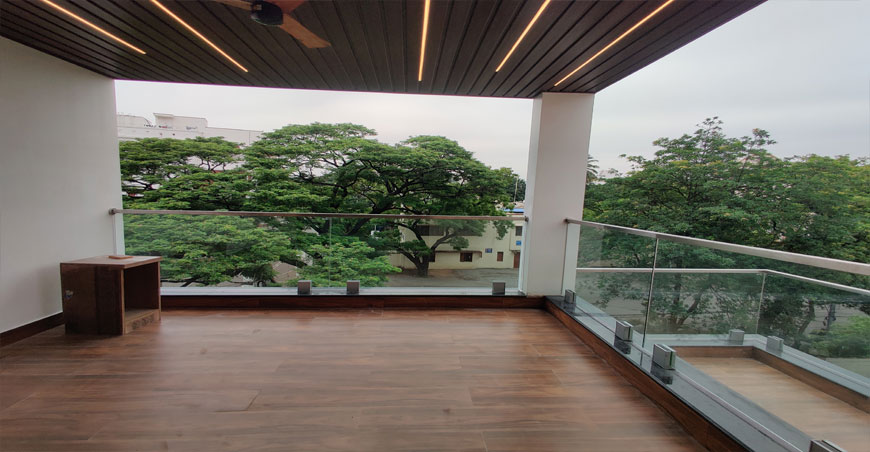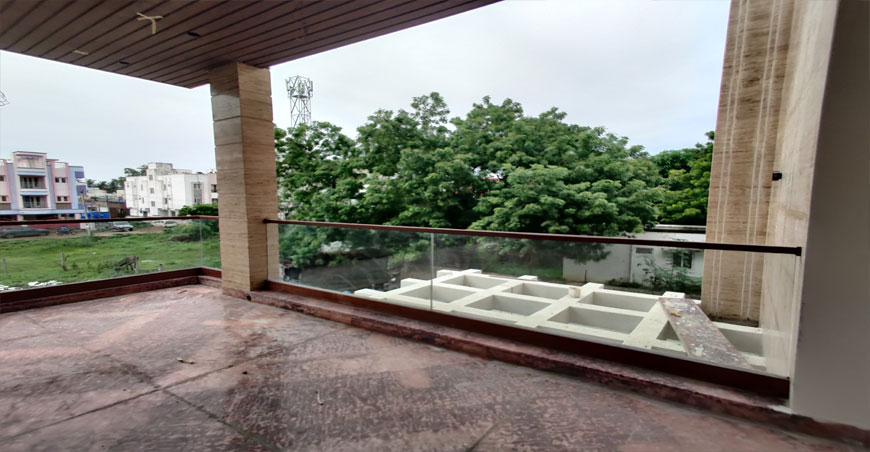In the realm of modern architecture and interior design, the need for spaces that are both functional and aesthetically pleasing has led to the widespread adoption of glass partitions. These transparent or translucent dividers have become a popular choice in both residential and commercial settings, offering a versatile solution for dividing spaces while maintaining an open and airy atmosphere. This essay explores the various aspects of glass partition work, including its benefits, applications, design possibilities, and impact on modern interiors.
One of the most significant advantages of glass partitions is their ability to create a sense of openness and continuity within a space. Unlike traditional walls, which can make a room feel closed off and confined, glass partitions allow light to pass through, enhancing the perception of space and creating a bright, inviting environment. This quality is particularly valuable in modern interiors, where the emphasis is often on creating fluid, flexible spaces that can adapt to various needs.
The transparency of glass partitions also allows for uninterrupted visual connections between different areas, making them ideal for spaces where a sense of unity is desired. Whether used in an office to maintain a connection between team members or in a home to create a seamless flow between living areas, glass partitions contribute to a harmonious and cohesive design.
In addition to their transparency, glass partitions can be customized with various finishes, such as frosted, tinted, or patterned glass, to achieve different levels of privacy or add an artistic touch to the space. These options allow designers to balance the need for openness with the requirement for privacy, depending on the specific function of the space.
Glass partitions offer unparalleled flexibility in terms of space division. They can be used to create temporary or permanent divisions within a room, making them ideal for environments that require adaptability. For example, in open-plan offices, glass partitions can be used to create private meeting rooms or individual workspaces without sacrificing the overall sense of openness.
In residential settings, glass partitions can be employed to define different zones within a home, such as separating the living room from the dining area or creating a home office within a larger space. The ability to easily reconfigure the layout of a space using glass partitions makes them a practical solution for evolving needs, whether due to changes in lifestyle, work patterns, or family dynamics.
The versatility of glass partitions also extends to their installation. They can be installed as fixed panels, sliding doors, or folding screens, depending on the specific requirements of the space. This adaptability allows for creative solutions that can enhance the functionality and aesthetic appeal of any interior.
One of the key benefits of glass partitions is their ability to enhance natural light within a space. By allowing light to pass through, glass partitions reduce the need for artificial lighting, which can lower energy consumption and create a more sustainable environment. This is particularly important in office settings, where maximizing natural light can improve the well-being and productivity of employees.
In residential spaces, the use of glass partitions can create a bright, airy atmosphere, making rooms feel larger and more inviting. The ability to diffuse light throughout a space can also help to create a more comfortable and balanced environment, reducing the need for additional lighting fixtures and contributing to energy efficiency.
Furthermore, glass partitions can be combined with energy-efficient glass options, such as low-emissivity (Low-E) glass, to enhance thermal insulation and reduce heat transfer. This can help to maintain a comfortable indoor temperature, reduce energy costs, and contribute to a more sustainable building design.
While glass partitions are often associated with openness and transparency, they can also be designed to provide acoustic control, balancing the need for privacy with the desire for a visually connected space. Acoustic glass partitions are engineered to reduce sound transmission between spaces, making them ideal for environments where noise control is important, such as offices, schools, and healthcare facilities.
By incorporating acoustic glass into partition systems, designers can create quiet, private spaces without sacrificing the visual benefits of glass. This is particularly valuable in open-plan offices, where the ability to hold private conversations or focus on work without distraction is essential.
The acoustic performance of glass partitions can be further enhanced by using laminated glass or adding soundproofing materials to the frame or surrounding structure. This allows for a high level of customization to meet the specific acoustic requirements of a space.
Glass partitions have found widespread application in various types of interiors, from commercial offices to residential homes. In office environments, glass partitions are often used to create meeting rooms, private offices, and collaborative spaces, all while maintaining a sense of transparency and openness. The ability to configure and reconfigure spaces as needed makes glass partitions an ideal solution for dynamic work environments.
In residential settings, glass partitions are increasingly used to create flexible living spaces that can adapt to different functions. For example, a glass partition can be used to separate a home office from the living area, providing a dedicated workspace while still allowing the homeowner to feel connected to the rest of the home. In smaller apartments, glass partitions can help to define different zones, such as sleeping, dining, and living areas, without making the space feel cramped.
In addition to their functional applications, glass partitions are often used as a design element in their own right. Decorative glass partitions, featuring patterns, colors, or artistic designs, can serve as focal points within a room, adding visual interest and personality to the space.
While glass partitions offer numerous benefits, there are also challenges and considerations that need to be addressed. One of the primary concerns is the maintenance of glass surfaces, which can show fingerprints, smudges, and dust more readily than other materials. Regular cleaning is necessary to keep the partitions looking pristine, which may require additional effort in high-traffic areas.
Another consideration is the cost of installation, as glass partitions can be more expensive than traditional walls or dividers. However, the long-term benefits, including durability, energy efficiency, and the ability to reconfigure spaces, often outweigh the initial investment.
Privacy is another factor that must be carefully managed when using glass partitions, particularly in environments where confidential conversations or activities take place. The use of frosted, tinted, or acoustic glass can help to address privacy concerns while still maintaining the overall benefits of glass partitions.
Glass partitions have become an essential element in modern interior design, offering a versatile and elegant solution for dividing spaces without sacrificing openness or natural light. Their ability to enhance the aesthetic appeal of a space, combined with their flexibility, energy efficiency, and acoustic control, makes them a popular choice in both residential and commercial settings. As architectural trends continue to evolve towards more open, adaptable spaces, glass partitions are likely to remain a favored option for designers and homeowners alike, embodying the ideals of modernity, transparency, and functionality.





